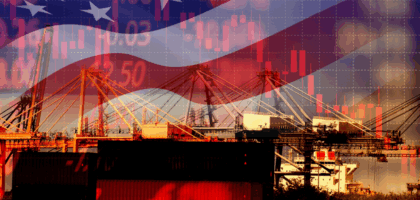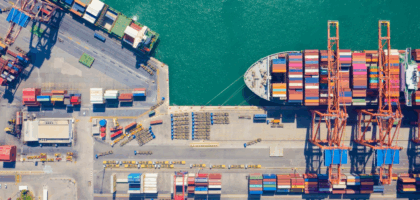Logistics management is a huge component of the supply chain, accounting for the planning, controlling, and execution of the movement of goods from beginning to end. So, what exactly does logistics management entail? We’re glad you asked.
First, what is “logistics management?”
To put it in the shortest of terms, logistics management is the process of handling goods from creation to consumption. The main objective of logistics management is to dedicate the right amount of resources or goods to the correct destination at the right time. Sounds simple on paper, but there are many factors that create a more complex scenario when it comes to logistics, including transfers, barriers, legal restrictions, and compliance regulations.
Now, take a step back and think about handling the above with hundreds or thousands of shipments that need to move around the world to multiple destinations via different modes of transportation and crossing countless international borders into countries with very different rules. It’s safe to say things can get quite complicated very quickly in this industry.
What are the key components of logistics management?
Now that you see the complexity of logistics, we’ll break down the five key components involved with logistics management.
1. Planning
Arguably the most important component of logistics management, effective planning is crucial to maintain balance between supply and demand. It involves mapping out, securing, and maintaining the storage, warehousing, and handling of your goods and materials. The market is highly unpredictable and being unprepared can lead to insufficient or improper supply of goods, damage to manufactured products or raw materials, or inadequate storage.
2. Packaging
The correct packaging makes all the difference in ensuring your products are safe during transportation and can greatly decrease the chances of your shipments arriving damaged. For the most part, businesses pack their goods in cuboidal form to make it easy to store, move, and deliver.
3. Inventory Management
Inventory management involves maintaining information on existing stock, availability of warehouse space, and current market demands. By investing in your inventory management, you can account for the imbalances between supply and demand. Some different types of inventory transportation strategies include direct shipping, warehousing, and cross-docking.
4. Transportation
The movement of goods is needed in almost every phase of transportation from manufacturing to final delivery. No matter if your company moves large or small shipments, focusing on the right transportation management will help control the flow of your goods via land, air, or ocean and yield benefits like timely deliveries, reduced costs, and minimized carbon footprints.
5. Information Management
Utilizing data can uncover useful insights, unforeseen bottlenecks, and areas for improvement within your business. By making the best use of technology, you can implement better processes to help create a more efficient supply chain. All the aforementioned components have a big contribution to effective logistics management but managing it can be made easier by investing in a logistics management software.
What is the importance of efficient logistics management in your supply chain?
It’s not enough to concentrate on logistics management but actually determine ways to make your supply chain the most efficient it can be. By focusing on efficiency, your company can:
- Maintain cost-effectiveness by keeping a pulse on delays and deliveries;
- Cater to customer demands and work towards a higher customer satisfaction rating and overall retention; and
- Keep an eye on transportation costs.
Resources:
- What Is Logistics Management? (Rasmussen University)
- 5 Major Components of Logistics Management (Shipsy)
- What Is Logistics Management? (Definition and Importance) (Indeed.com)
- Logistics & Supply Chain Management: Everything You Should Know (ESSNPS)



